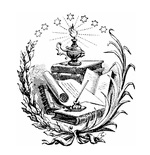
No Catholic Church, No Scientific Method
GUEST COLUMN
The argument that the Church has a role to play in the continuing evolution of scientific endeavor is no doubt confusing to many people, believers and nonbelievers alike. In modern times it has become fashionable to think of the Catholic Church as somehow antithetical to science. The idea is virtually universal among nonbelievers, among whom I, alas, count myself. I suspect the idea has become more common among Catholics as well. There is no reason it should be: The scientific project, even the scientific method itself, is an invention of the Catholic Church.
What we refer to today as “science” is something invented by man. There is a definite date before which there was no science, and a date after which there was science. This isn’t controversial or mysterious: We know exactly when it happened. In fact, some of the original manuscripts that helped codify science and modern scientific thought still exist. For some reason, many today like to think of Galileo as the first scientist. Though he was indeed a great scientist, he was by no means the first; he was simply the first to have political difficulties as a result of his discoveries. Oddly, nobody gives Galileo credit for being a devout Catholic (see “The Galileo Legend” by Thomas Lessl, NOR, June 2000).
Science was invented in the high Middle Ages, a peculiar era of high prosperity and human achievement in Europe and other parts of the world. It was a time of knights, a time when Europeans reached their true potential as civilized people. The great European universities were founded during this happy era: Bologna, Coimbra, Paris, Oxford, Salamanca, Cambridge, Montpelier, Padua. The very idea of the university was invented during this period, and it came straight from Catholic monasticism. Musical notation was invented. Windmills, eyeglasses, printing, improved clocks — all were invented around this time, and other inventions, like paper, the spinning wheel, and the magnetic compass, were introduced from abroad by the great commercial city-states.
We have visual evidence of the glory and prosperity of this time in Europe in the form of the Gothic cathedrals. One can look at these magnificent churches as the physical crystallization of the same heroic spirit that produced the scientific method, in the same sense that one can look at the Parthenon of Pericles as the physical crystallization of the spirit of Plato and the Greek philosophers.
You May Also Enjoy
The heretic is almost always a more dangerous adversary of the Church than the outright atheist. The heretic is interested in Church doctrine and wants to change it.
The Real Presence: Not Physical... Did Judas Avoid Hell?...
What should a Christian magazine do if it’s in trouble? How ’bout write a creed!…

